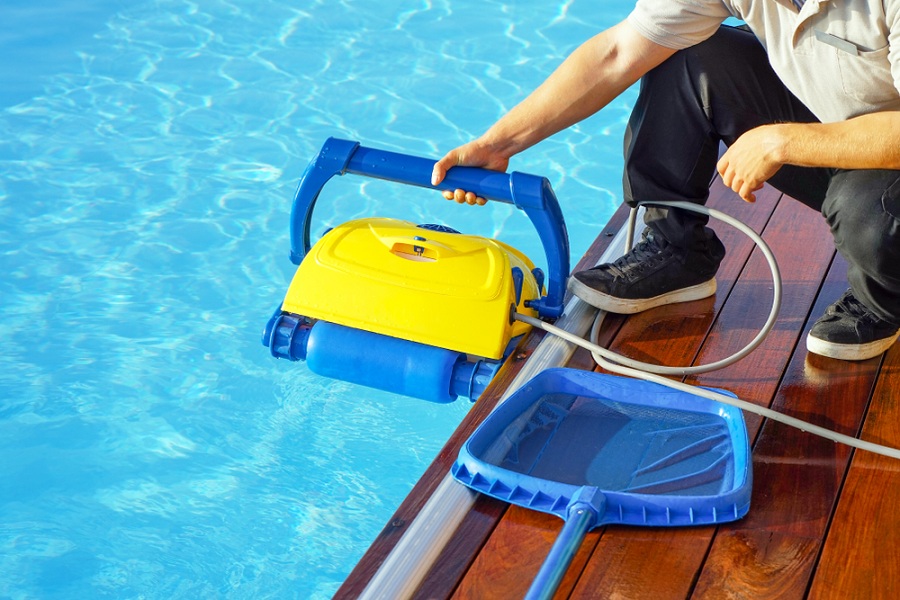A pool vacuum is a device used to clean the water in swimming pools.
They are usually powered by electricity or by your pool’s existing pump and filter system.
Manual pool vacuums are designed to be operated by a person – just like an indoor vacuum cleaner.
On the other hand, automatic pool vacuums are designed to work without your presence or involvement.
In this brief introductory guide, we’ll discuss both types of pool vacuums and help you decide whether you need one or not.
We also answer the most commonly asked questions we get from pool owners related to pool vacuums.
How Do Pool Vacuums Work?
Regardless of type, all pool vacuums work by using a powered water vacuum system to suck up dirt, leaves, debris, and other particles from your pool’s bottom, sides, and surface.
Captured debris is trapped in a filter of some kind, either by a dedicated filter on the vacuum itself or by your pool’s existing water filter system.
Why Do You Need A Pool Vacuum?
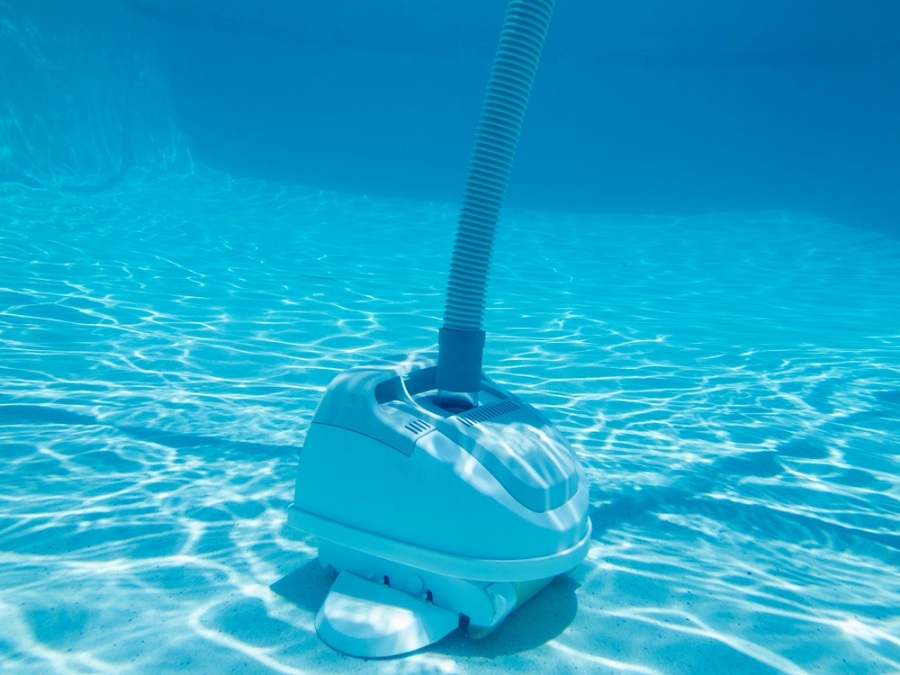
If you have a pool, then it will need regular cleaning – on a specific schedule, in fact.
This can be done manually with a brush and a pool net, but this takes a lot of manual labor.
More importantly, pools often need to be cleaned when you’re not around. Your schedule and your pool’s schedule just don’t always work out.
Pool vacuums give you the ability to maintain a proper cleaning regimen and minimize the amount of time you spend cleaning your pool.
They are win-win appliances, to be sure.
Pool Vacuum Versus Automatic Pool Cleaner
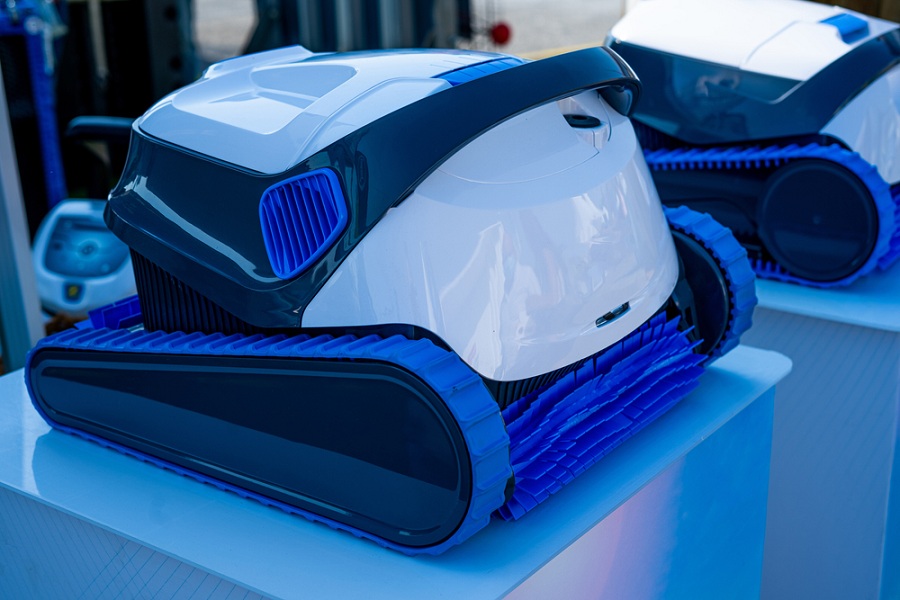
These two terms often get confused, so let’s sort this out.
A manual pool vacuum is a very simple device consisting of a large round or rectangular vacuum head attached to a long water hose. You attach the hose to the suction line at the bottom of your pool skimmer box to provide water suction.
Debris is sucked off the pool’s floor and straight into the pool filter system, where it is removed. You must manually operate it – just like vacuuming the floor of your home.
On the other hand, an automatic pool cleaner is a self-guided pool vacuum designed to clean your pool without requiring your constant attention.
Some automatic pool cleaners are powered by electricity and use a motorized drive system to move along the bottom of the pool. Others rely on your pool pump system to create jets of water that propel them across your pool’s floor and walls.
Regardless of power source, the beauty of an automatic pool cleaner is that you just turn it on and let it run while you go about your day. Most can be scheduled to run while your pump is running. Many can be scheduled to run at specific times of the day, so your pool is always clean when you return home from work.
When you return home, the machine has completed its job – sucking up water, leaves, sticks, hair, etc., and depositing it into the onboard filter basket.
All you need to do is empty the filter basket or cartridge from time to time.
Benefits of Using A Pool Vacuum
Many benefits are associated with having a pool vacuum installed in your home. Here are some of them:
- It keeps the pool cleaner for longer periods.
- It reduces the amount of chlorine needed to maintain a healthy pool.
- It allows you to clean the pool more efficiently.
- It saves you time and opens your schedule up.
What Are the Different Types of Pool Vacuums?
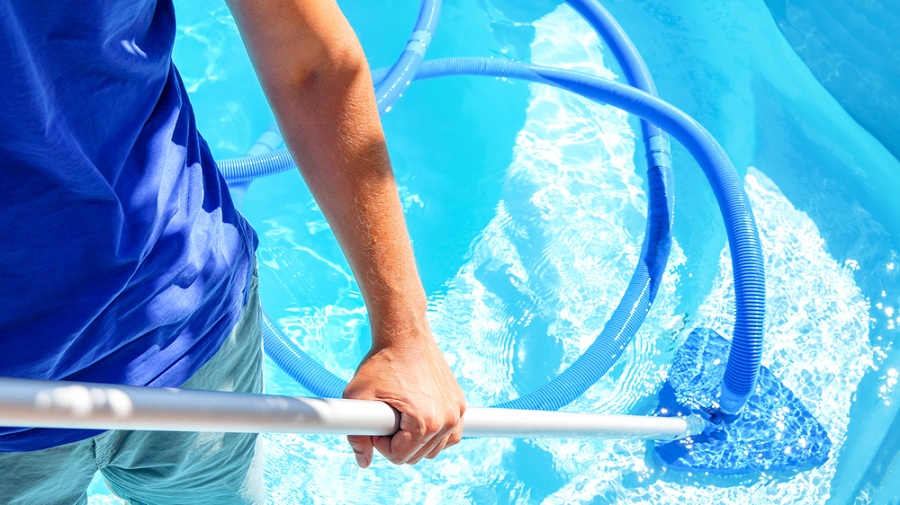
There are several different types of pool vacuums available today. Here are some popular models:
- Rechargeable/Battery-Powered Pool Vacuum – A small handheld or pole-mounted electric pool vacuum that uses rechargeable batteries for power and an electric water pump to create suction. Typically used for small cleanup jobs. Perfect for a small above-ground or kiddie pool. Cost ranges from $50 to $500.
- Manual Suction-Side Pool Vacuum – A manual suction-side pool vacuum is a very simple device that uses your pool’s pump to suck dirt and debris directly into your pool’s existing filter system. It has no onboard filter or strainer but instead relies on your pool’s filter to do the cleaning. Cost ranges from $100 to $300.
- Automatic Pressure-Side Pool Vacuum – A self-propelled automatic floor and wall cleaner that is powered by your existing pool pump or by a dedicated booster pump. Most pressure-side cleaners collect debris into an onboard filter basket or net, which must be emptied periodically. Cost ranges from $250 to $1,000.
- Robotic Pool Vacuum – A fully-automated intelligent pool vacuum that meticulously navigates and cleans all of your pool’s surfaces. Powered by electric motors that propel the device and create suction to collect debris-filled water. Debris is captured by onboard filter media, which you must empty periodically. Cost ranges from $350 to $1,500 depending on the size of the pool and various navigation and scheduling features.
- Pool Skimmer – A pool skimmer traps and catches debris floating on the surface of the water. Most are simple mechanical devices that use your pool pump system to suck surface water in and trap debris in a strainer basket which you must empty periodically. Solar-powered and robotic pool skimmers are self-contained electric-powered appliances that float across the surface of your pool and trap floating debris in onboard filter baskets that need to be emptied.
How Often Should You Vacuum Your Pool?
There are a few factors to keep in mind when determining how often you should clean your pool. These include the type of water chemistry used in your pool, whether it is heated or unheated, and what types of chemicals you use.
Spot vacuuming is usually done once per week during the spring, summer, and early fall months. You’ll check your filter baskets and top-off chemicals at the same time. This allows the filter system to work efficiently while keeping the pool free of algae growth.
Heavy annual cleaning is required when you open your pool for the season. Often this involved thoroughly vacuuming all floors and sides after removing any calcium and mineral deposits, stains, and algae buildup from the surfaces of your pool. You’ll want to thoroughly clean your pool filter after doing this.
After you close your pool for the winter, you don’t need to vacuum at all. However, you still want to make sure that the pump does not become clogged because of leaves and other debris that accumulate over the course of the season. A good way to prevent that is to install a pool cover for the winter.
Pool Cleaning Pro Tips
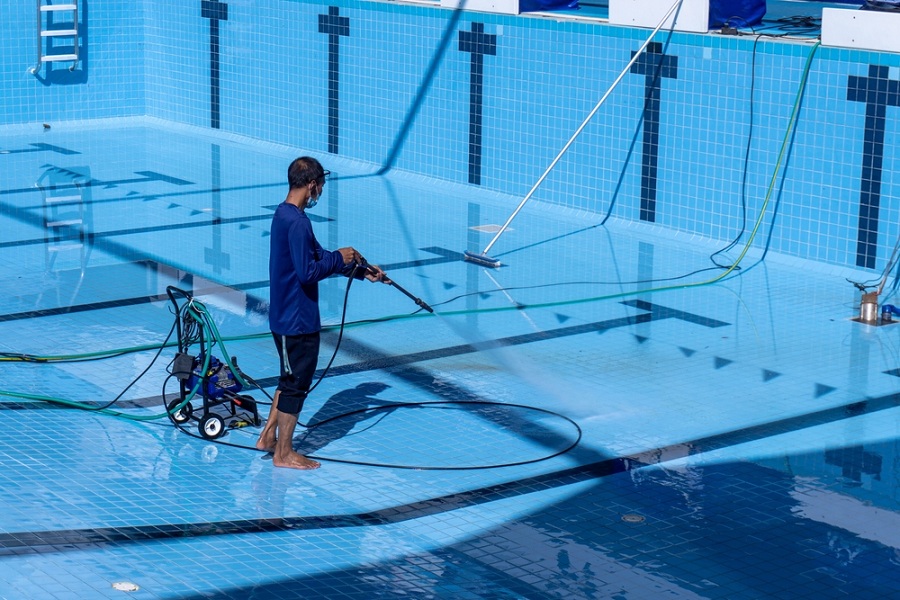
Cleaning your pool isn’t easy. It takes planning and practice to ensure you’re doing it efficiently and effectively.
We’ve got a few tricks up our sleeves to help make sure you’re cleaning in the most effective way possible.
Here are five ways to keep your pool cleaner longer while getting a better job done.
1. Use the Right Equipment
The first step to making sure you get the best results out of your pool cleaning routine is using the right equipment. The tools you choose will have a big impact on how well your pool gets cleaned.
2. Start Small
When you start with small areas, you can easily see if there are any problems with your pool cleaning routine. If you notice something wrong, you can fix it before moving on to larger areas.
3. Keep an Eye Out For New Issues
Do you see troubling black algae spots? Does calcium drip on your gunite walls? If you spot a problem area, take note of where it is so you can address it later.
4. Be Prepared
Make sure you have everything you need before starting your pool cleaning routine. That includes having extra filters, chemicals, and even a spare power cord handy. Make sure you’ve got enough chemicals and chlorine on hand to properly shock the pool after its been cleaned.
5. Have Fun!
You might find yourself enjoying your pool cleaning routine more than you thought possible. So enjoy it!
Pool Vacuum Maintenance Tips
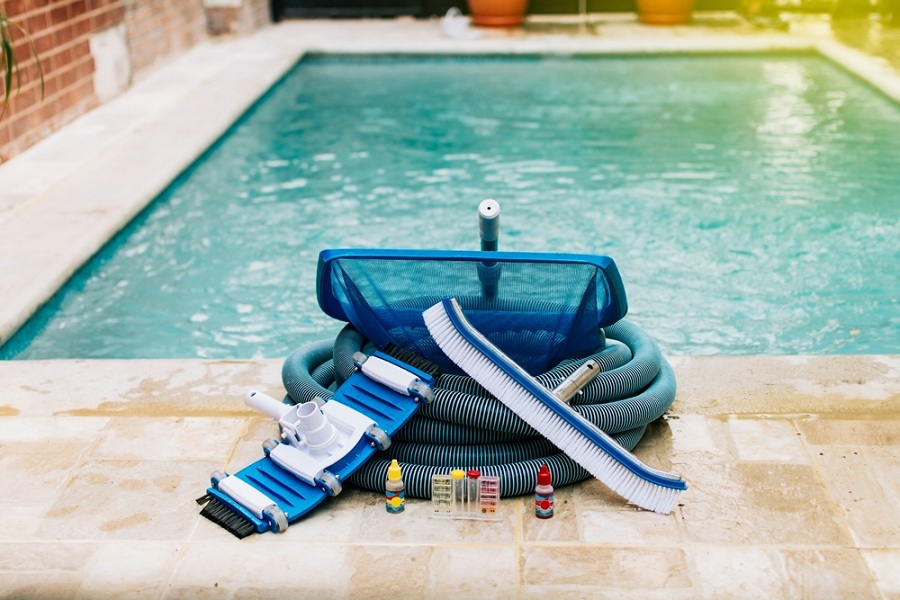
Here are some tips to help you keep your pool vacuum running smoothly:
- Keep the pool vacuum plugged into a power source at all times.
- Make sure the pool vacuum is turned off before entering the pool.
- Ensure that the pool vacuum is properly connected to the wall socket.
- Always read the manufacturer’s manual before using the product.
- Store the pool vacuum away from children and pets.
- Check the pool vacuum regularly to make sure it’s working correctly.
- Before storing the pool vacuum, empty the filter basket to prevent organic growth.
- If you notice any damage to the pool vacuum, contact the manufacturer immediately.
Pool Vacuum Safety Tips
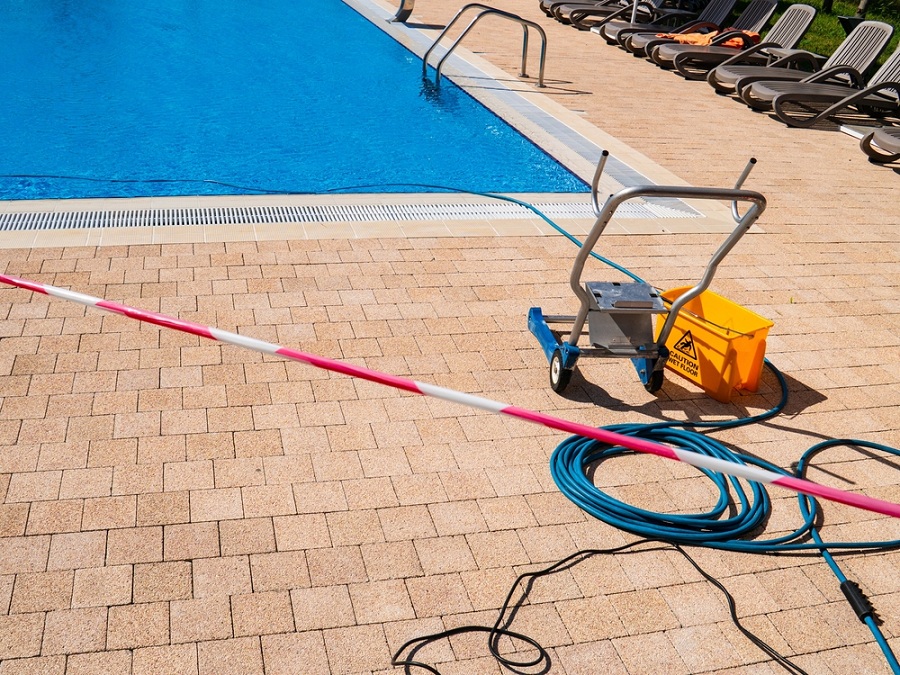
Always follow these safety tips when cleaning your swimming pool using a pool vacuum:
- 1. Never leave children unattended near an automatic pool vacuum running in your pool. The cords and water lines can choke and confuse young children. Children should always be supervised when they are near the pool.
- 2. Do not allow pets to swim in the pool. Pets can drown in a matter of seconds, and cords and lines can confuse them too.
- 3. Use caution when operating an electric-powered pool vacuum. Never run the pool vacuum when tired or using alcohol or drugs.
FAQs
Q: Can I Use a Pool Vacuum While Swimming?
Yes, but only for adults. Using a pool vacuum while swimming can be dangerous for young children and pets due to the risk of getting tangled in cords and hoses.
Q: Can vacuuming remove algae from a swimming pool?
Algae grow best in warm temperatures and lots of sunlight, making it ideal for pools. If left unchecked, algae can grow rapidly, turning clear water murky brown or green.
Vacuum your pool every week or two to keep the surface free of debris, and make sure to vacuum around the perimeter of the pool. A self-propelled pool cleaner is a great way to do both quickly and efficiently.
Q: What Happens if I Forget to Turn Off the Pool Vacuum?
If you forget to turn off your automatic pool vacuum, you probably won’t do any serious harm, but you could run up a large power bill depending on the type of pool vacuum you use. In addition, all kinds of automatic pool vacuums tend to wear out over time, so you don’t want to run them more than you need to.
Q: How Long Will It Take to Clean my Pool With a Pool Vacuum?
This depends completely on the type of pool vacuum you use and the size of your pool. For example, cleaning the floor of a small 16ft x 24 ft pool should only take you 15-30 minutes using a simple suction-side manual pool vacuum.
Most robotic pool vacuums that use intelligent navigation like the Dolphin Premier can thoroughly clean even the largest inground pool in 2-3 hours. Pressure-side automatic pool vacuums like the Polaris 280 normally take a bit longer due to their random navigation.
Q: Are There Any Safety Warnings When Using Pool Vacuums?
A: Yes. Never use a pool vacuum if the following conditions are met:
1. Your child is under age 3.
2. Your child is not wearing a life jacket.
3. Your child has trouble breathing.
4. Your child cannot swim.
5. Your child is unconscious.

